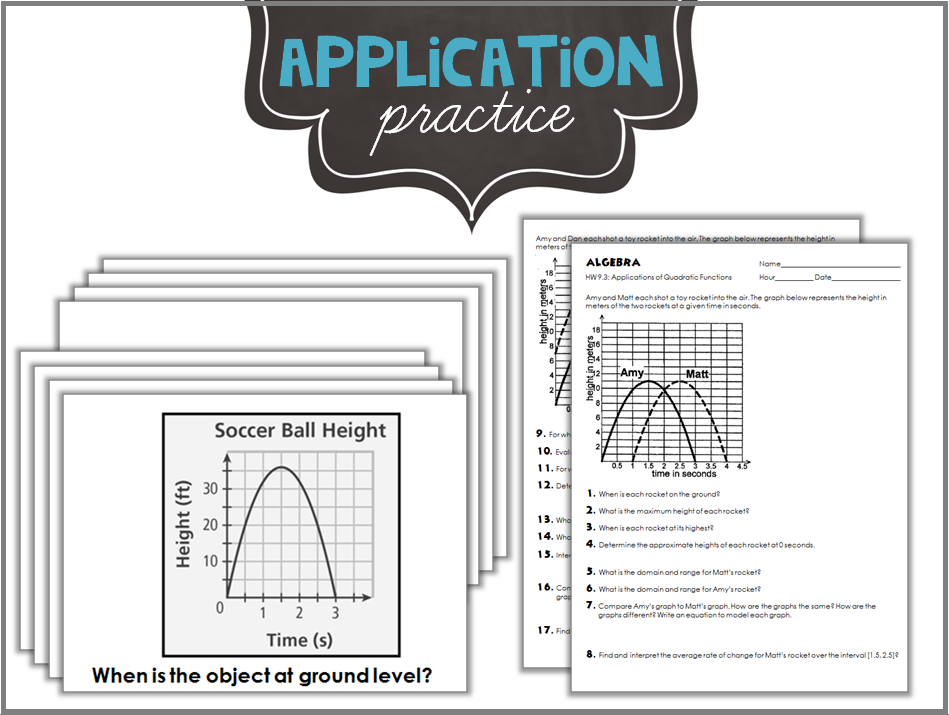The previous post on
Introducing Quadratic Functions started our journey with quadratic functions through solving puzzles, building the definition of parabola, and a narrative illustrated with transformed functions. The next step is to build fluency with the properties of quadratic functions represented in different ways (numerically, graphically, algebraically, and verbally). Use a table of values to determine the behavior of the parent function (aka Norm). Extend previous learning on transformations to make connections between a quadratic function graphically and algebraically in vertex form. This stations activity uses the RallyCoach structure to complete a series of transformations and construct a function model of the resulting graph. Students work with their shoulder partner and rotate through a total of 8 different stations. Each station requires one coordinate geoboard per pair and a station task card. (Note: We only used pegs because I have an aversion to rubberbands in the classroom!) The stations activity with record sheet and two practice sets are included. Be sure to emphasize intercepts and maxima/minima.
If you have limited students to interpreting key features of linear and exponential functions, quadratic functions will energize the analysis routine. Intervals where the function is increasing, decreasing, positive, or negative requires detailed inspection with quadratics. For now, while students have limited solving skills, let's restrict our graphs to displays where the vertex and intercepts can be easily labeled. One key feature that may not have been addressed in prior units is symmetry; specifically, using the concept of symmetry to classify functions as even or odd. In Algebra 1, even/odd/neither classification is solely by inspection of the graph. Algebraic proof and function notation to generate evidence is reserved for Algebra 2. Another key feature included in the quadratics unit is end behavior. Although previously discussed, be sure to formalize the notation to communicate end behavior mathematically. This deck of cards can be used in a sorting activity to build the concept of even functions and odd functions or in a class building activity to practice function classification and/or end behavior.
This deck of cards can be used in a class building activity to practice function notation in terms of a context that models quadratic functions. And the question set can be used in an All Write RoundRobin structure to analyze quadratic graphs. The sequence of questions prompt a great discussion of refining function models to represent a restricted domain within the context of the situation. Note: This document has been adapted from LTF to include more emphasis on key features.
These team activities offer practice with average rate of change. The "Find the Function" activity reviews graphing and prompts the discussion of finding the slope of a parabola (and also the standard form for later!). Revisit the Peg Puzzle to discuss using the second differences to reveal that the generated data is quadratic. What are second differences? You're finding the slope of the curve...or the average rate of change over a specified interval...introductory calculus at its finest! A brief activity using the Showdown structure is included for students who need to refine their descriptions of average rate of change. An activity using the Simultaneous RoundTable structure is included for students to practice calculating and interpreting the average rate of change of quadratic functions.
These activities highlight Common Core State Standards HSF-IF.A.2, HSF-IF.B.4, HSF-IF.B.5, HSF-IF.B.6, and HSF-IF.C.7a included in 7th and 8th Accelerated Algebra 1.





